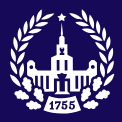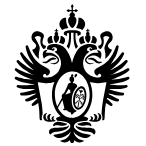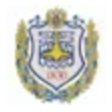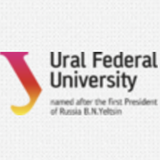Detailed introduction of Moscow State University M. V. Lomonosov:
Introduction
Moscow State University M. V. Lomonosov, referred to as Moscow State University or Moscow State University, is the largest and oldest comprehensive research university in the Russian Federation. It is also one of the top and world-renowned universities in Europe. It is a member of the International Public University Forum, the European Capital University Alliance, the European University Association, and the Sino-Russian Comprehensive University Alliance.
Overview
Student size: As of 2023, the total number of Russian students is 40,000 and the number of foreign students is 10,000.
Number of teachers: 5,000 teachers.
History and establishment time
On January 25, 1755, Queen Elizabeth Petrovna personally approved the establishment of Moscow Imperial University; in 1917, the school was renamed Moscow State University; in 1940, in order to commemorate the scientist and main founder of Moscow University Mikhail Lomonosov, Moscow University was named after him.
School strength
Teaching staff: 5,000 Teachers, including 11 Nobel Prize winners, 6 Fields Medal winners and several Turing Award winners.
Teaching facilities: The school has a building area of 1 million square meters, with 42 departments, more than 70 undergraduate majors and expert programs, more than 80 master's programs, more than 370 teaching and research offices, 15 research centers, and 12 research institutes. In addition, the school also has 4 museums, 6 satellites, 4 supercomputers, 1 Medical research and education center.
Academic achievements: It has profound academic accumulation and outstanding research results in the fields of mathematics, physics, chemistry, mechanics, astronomy, etc. It has cultivated a large number of top talents for Russia and even the world in many fields such as natural sciences, humanities and social sciences, and promoted the development of science and technology and social culture.
Nature of the institution
Public research university.
Educational philosophy
It emphasizes that science is a clear understanding of truth and enlightenment of the mind, focuses on cultivating students' comprehensive qualities and professional abilities, is committed to providing high-quality teaching, academic research, and promoting the inheritance and innovation of scientific culture, adheres to the tradition of democratization of education, opens the door to all those who are eager for knowledge and pursue progress, and provides them with equal educational opportunities regardless of their background, so as to cultivate outstanding talents who can promote social development in various fields.
Key laboratories and disciplines
Key disciplines: Mathematics, physics, chemistry, mechanics, astronomy, biology, medicine, law, literature, linguistics, history, philosophy, economics, sociology and other disciplines have strong strength and high international reputation, and are at the world's leading level in many disciplines of natural sciences and humanities and social sciences.
Key laboratories: The school has more than 350 laboratories, as well as multiple research centers and research institutes, such as the relevant laboratories of the Department of Mechanics and Mathematics, the experimental and theoretical physics laboratories of the Department of Physics, and various professional laboratories of the Department of Chemistry, covering multiple fields from basic scientific research to applied scientific research, providing advanced research platforms and conditions for researchers and students.
Department Settings
The school has 43 departments, such as the Department of Mechanics and Mathematics, the Department of Computational Mathematics and Cybernetics, the Department of Physics, the Department of Chemistry, the Department of Biology, the Department of Soil Science, the Department of Geology, the Department of Geography, the Department of History, the Department of Philosophy, the Department of Language and Literature, the Department of Law, the Department of Economics, etc.
Ranking
In the 2022 Soft Science World University Rankings, the school ranked 101-150; in the 2022 QS Emerging Europe and Central Asia University Rankings, the school ranked 1st; in the 2022 Emerging Economies University Rankings, the school ranked 6th; in the 2022 Times Higher Education World University Impact Rankings, the school ranked 35th.
QS ranked 87th in 2024 and 2025 Ranked 94th in the QS World University Rankings.
Expenses
Tuition fees at Moscow State University vary depending on the major and degree level. Generally speaking, undergraduate tuition fees are around $3,000-5,000 per year, master's tuition fees are around $4,000-6,000 per year, and doctoral tuition fees are around $5,000-7,000 per year. In addition, students also need to pay for accommodation, living expenses and other expenses. The cost of living in Moscow is relatively high, and the monthly living expenses are around $500-1,000.
Campus
The main campus is located in Sparrow Hills, Moscow. There are many teaching buildings, libraries, museums and other buildings with historical significance and architectural value on campus. The Moscow State University Library is one of the oldest libraries in Russia and the largest library in universities. It was built in 1756 and has a total collection of 8.5 million books and more than 60,000 readers. Every year, about 1.8 million people visit the library and 4 million books are borrowed. The library has 16 lending points, 60 reading rooms, and 3,300 seats.
-

Peter the Great St.Petersburg Polytechnic University
-

Moscow State University M. V. Lomonosov
-

St. Petersburg State University
-

Bauman Moscow State Technical University
-

Tomsk State University
-

Peoples' Friendship University of Russia
-

Don State Technical University
-

Moscow Institute of Physics and Technology
-

Ural Federal University
-

Kazan Federal University
-

Mesoamerican University
-

Istmo University
-

Mariano Galvez University of Guatemala
-

Regional University of Guatemala
-

Galileo University
-

Francisco Marroquín University
-

Rafael Landívar University
-

University of the Valley of Guatemala
-

University of San Carlos of Guatemala
-

Technological Institute of Tlaxcala Plateau
-

Golfo University
-

Technological University of South Sonora
-

Technological University of Huejotzingo
-

Tizimín Institute of Technology
-

Chilpancingo Institute of Technology
